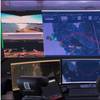Unmanned Ships: How Close is the Autonomous Ferry?
The first remote-controlled ferry demonstrator could hit the water within four to five years thanks to a new wave of research into operational efficiency based on ship intelligence solutions.
The prediction from Oskar Levander, VP for innovation, engineering & technology at Rolls-Royce Marine in Finland, will be explored at next month’s 40th annual Interferry conference in Copenhagen, where technical innovations will be a central theme of the trade association’s agenda.
Levander will suggest that the maritime industry is at the dawn of an era in which ship intelligence is one of the main technology trends – driving advances such as increased automation, smart controls, robotics, optimization/decision support tools, equipment/system health management and predictive maintenance schemes. He believes that ship intelligence will also drive the development of remote control and autonomous solutions, stressing: “Today there is a lot of R&D focus on unmanned airplanes and driverless land-based vehicles and society is becoming more prepared to accept these game-changing solutions. It is only a question of time as to when shipping will follow the same path.”
According to Levander, the first unmanned commercial ships are likely be locally operated vessels since single flag states can permit their operation before international regulations are in place. In his view, ferries would be a prime candidate for early adoption because they operate within a confined area and in addition ‘there is a clear desire to address the crew cost’. He adds that studies indicate most essential technology building blocks are already in place, but practical marine solutions will still require some development efforts.
Case studies of two fuel-saving solutions will also feature in the conference’s innovation sessions. Tuomas Riski, CEO of Finland’s Norsepower, will report on sea trials of the company’s Rotor Sail auxiliary wind propulsion system, which has been tested on Bore Line’s ro-ro vessel Estraden since last year with ‘very promising’ results. In favorable wind conditions, the system allows the main engines to be throttled back, reducing fuel consumption and related emissions while maintaining speed and voyage time.
In addition, an underwater hydrofoil-type wing fixed to the stern of a ship will be described by Bruno Bouckaert, commercial director of Netherlands-based Hull Vane. The device saves fuel by generating beneficial lift force to reduce wavemaking, pitching, rolling and yawing. Ferries are said to be very suitable ship types due to their high sailing speed and limited scope for slow steaming. Installations on three vessels ranging from 30-55 metres long have shown savings of 8-20% in propulsion power depending on speed, while Computational Fluid Dynamics calculations and model tests indicate 4-15% savings for larger vessels up to 220 meters.
Further cost and environmental benefits will be highlighted in a session dedicated to electric ferries. Speakers include Eliza Gagatsi, senior project manager at the Hellenic Institute of Transport, who is impact manager for the fully electrified E-ferry, a new project supported by the European H2020 ‘green’ ferry initiative. The ferry is set to be powered by the largest battery pack ever installed in a vessel and is designed to combine energy efficiency and zero GHG emissions with competitive speed, capacity and reliability.
Another zero-emissions initiative, the European Commission-backed BB Green innovation project, will be described by project coordinator Ulf Tudem, general manager of Norway’s Effect Ships International. The company has developed the concept for a 30 knot electric commuter ferry of vacuum-infused carbon sandwich construction in which an air-supported monohull offers a 40% reduction in water resistance. A 20x6m full scale demonstrator has been built by BJB of Latvia. The prototype also features a battery electric and contra rotating pod propulsion driveline developed by Echandia of Sweden, with powering from a new lithium ion titanate battery developed by Emrol of Belgium.
















